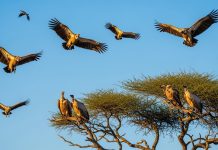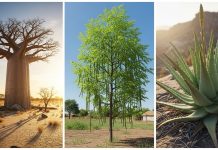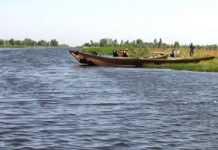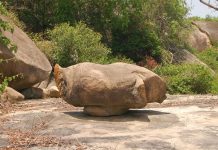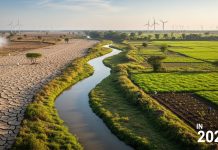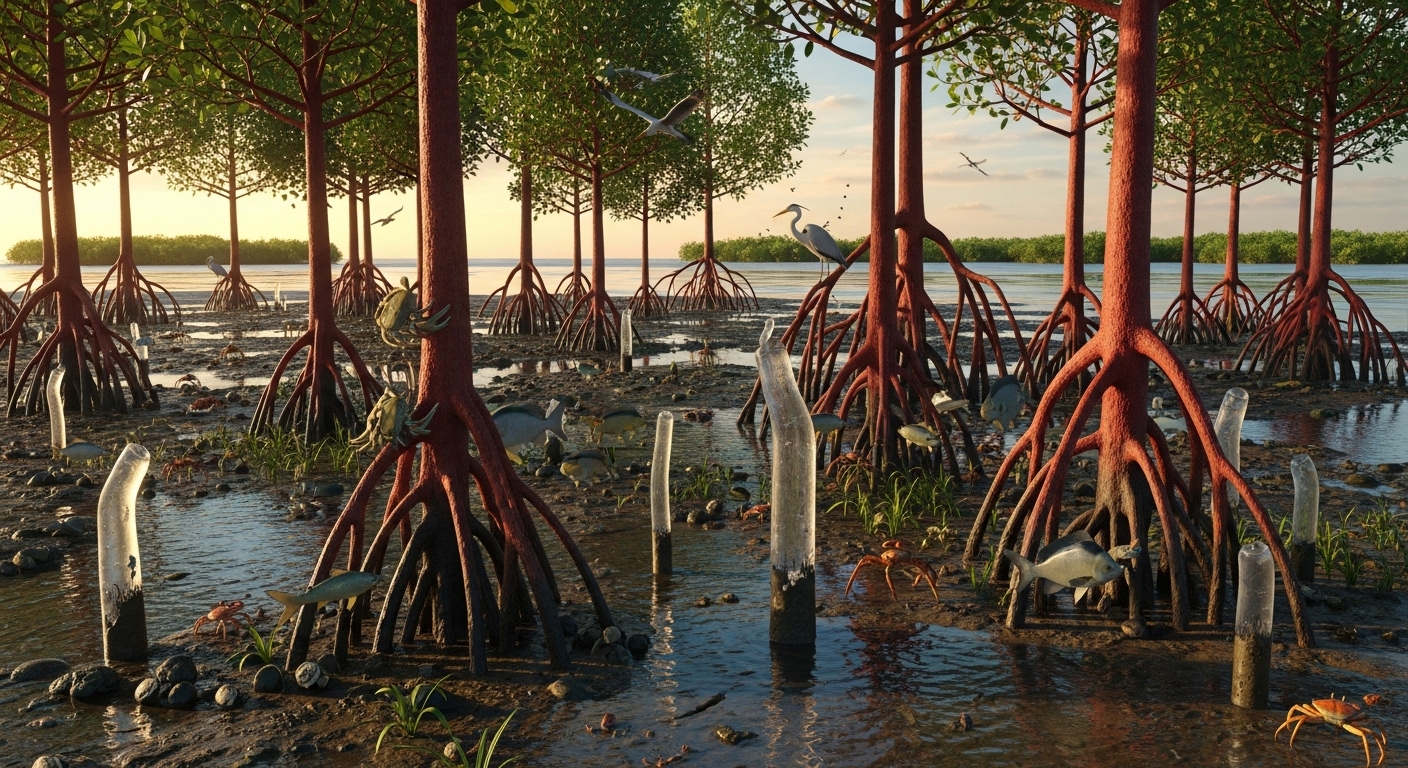Mangroves are special shrubs or trees found in coastal areas where salt and freshwater meet. These plants are uniquely adapted to survive in harsh environments, such as saltwater, flooding, and erosion. They are salt-tolerant trees and shrubs that grow in tropical and subtropical regions. Mangroves are found in intertidal areas, such as river deltas, estuaries, and shallow lagoons. They can also be found in other open seas, sheltered bays, and fringe islands.
Key Characteristics of Mangroves
- Salt Tolerance: Mangroves are halophytes, meaning they can grow in salty conditions.
- Prop Roots: Their exposed supporting roots help stabilize them in muddy areas.
- Pneumatophores: Some species have breathing roots that protrude from the mud to absorb air.
- Buttress Root System: Their strong root systems help them survive in unstable soils.
Where Mangroves Grow
Mangroves are found in tropical and subtropical regions, especially in estuaries, salt marshes, and along muddy or rocky coastlines. They grow in areas with low oxygen, where fine sediments accumulate due to slow-moving waters.
Why Mangroves Matter
Mangroves are incredibly important to both the environment and humans.
- Protect Coastlines: They act as natural barriers against storms, flooding, and erosion.
- Support Marine Life: Mangroves provide shelter and breeding grounds for a diverse array of fish, crabs, birds, and other marine organisms.
- Store Carbon: They absorb and store carbon dioxide, helping to fight climate change.
- Improve Water Quality: Mangrove roots filter pollutants and sediments from the water.
- Provide Resources: They offer food, timber, and livelihoods to local communities.
- Support Other Ecosystems: Mangroves protect nearby coral reefs and seagrass meadows by trapping sediment that could harm these ecosystems.
Mangroves in Nigeria
Nigeria is home to the largest mangrove forest in Africa and the third-largest in the world, located in the Niger Delta region.
Location
The Niger Delta spans nine states, including Rivers, Bayelsa, Delta, and Cross River.
Common Species
The most common mangroves in Nigeria are:
- Red Mangroves (Rhizophora species)
- Black Mangroves (Avicennia germinans)
- White Mangroves
- Golden Leather Fern
Importance
The mangroves in the Niger Delta are vital for:
- Protecting coastlines and communities from natural disasters.
- Supporting marine and terrestrial life.
- Providing essential resources for millions of people in the region.
Threats to Mangroves
Mangroves in Nigeria face several challenges, including:
- Oil Spills and Pollution: Widespread oil exploration has destroyed large areas of mangroves.
- Deforestation and Urbanization: Human activities and land development reduce mangrove forests.
- Invasive Species: Plants like the Nipa palm outcompete native mangroves.
- Climate Change: Rising sea levels and shifting weather patterns pose a threat to mangrove habitats.
Efforts to Protect Mangroves
Several initiatives aim to conserve mangroves in Nigeria and globally:
- Mangrove for Life Project: Launched in 2021 to restore Nigeria’s mangroves.
- UN-REDD Programme: Trains local communities to protect mangroves and cut invasive plants.
- Global Mangrove Alliance: Promotes conservation and regrowth worldwide.
- Community Action: Local groups and conservationists are working to replant and safeguard mangrove forests.
Mangroves are not just trees; they are lifelines for coastal communities and critical ecosystems. Protecting them is essential for biodiversity, climate stability, and the well-being of millions of people. By conserving mangroves, we protect ourselves and the planet.


